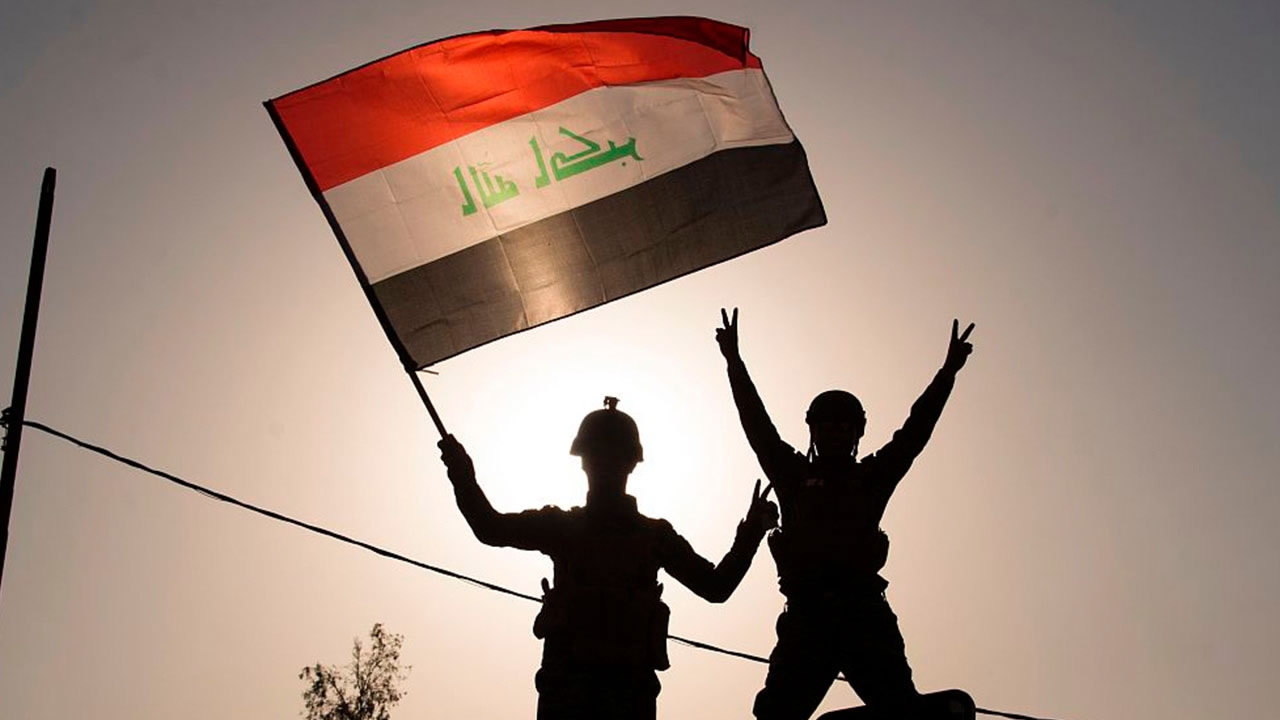The year 2017 may be unforgettable for many Iraqis, especially those who live in Mosul, Iraq’s second largest city.
In July this year, after nine months of fierce fighting, the northern Iraqi city was recaptured from ISIL militants who had spread horror and terror for three years there. It was a heavy blow to the terrorist group and a historic victory for all Iraqis and even the whole world as efforts against terrorism intensified.
Mosul fell into the hands of evil in 2014, when ISIL gained large swathes of territory in Iraq and Syria and ran the city with brutality: looting, torturing and killing civilians.
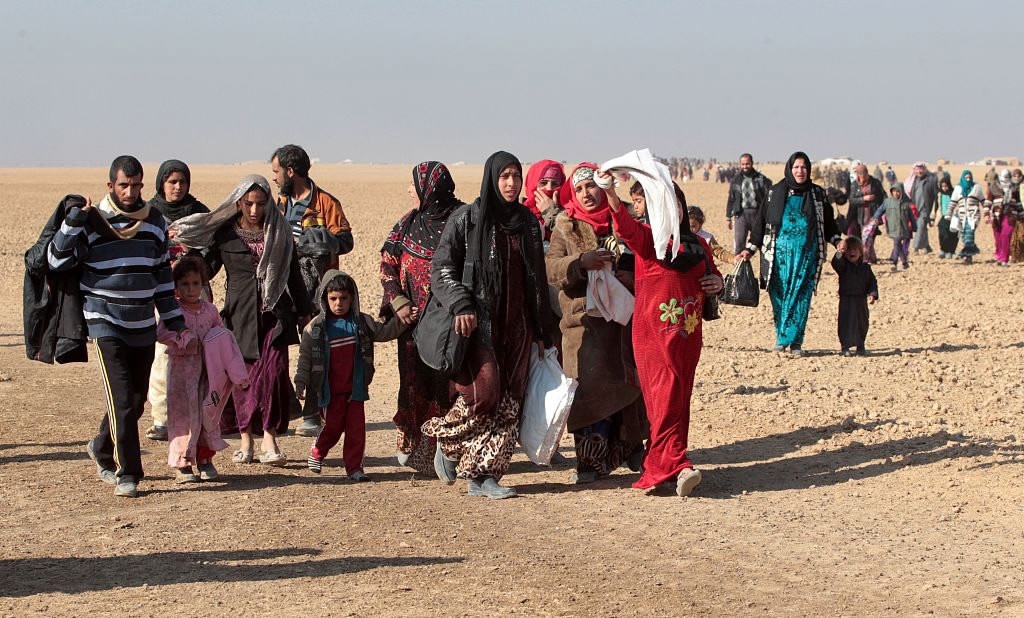
Iraqi families are being escorted from their makeshift camp to safer areas on December 11, 2016. /VCG Photo
Iraqi families are being escorted from their makeshift camp to safer areas on December 11, 2016. /VCG Photo
It was not until October 2016 that the Iraqi government announced its campaign to liberate the city from ISIL. Supported by airstrikes from a US-led coalition, Iraqi forces made fast gains and retook the eastern half of Mosul in three months.
But ISIL fighters wouldn’t give up without a fight. They built intricate tunnels to defend themselves from airstrikes. In those tunnels, basic supplies including food and milk as well as blankets and TV sets were also found. The militants also used suicide bombing and booby traps to slow their enemies down.
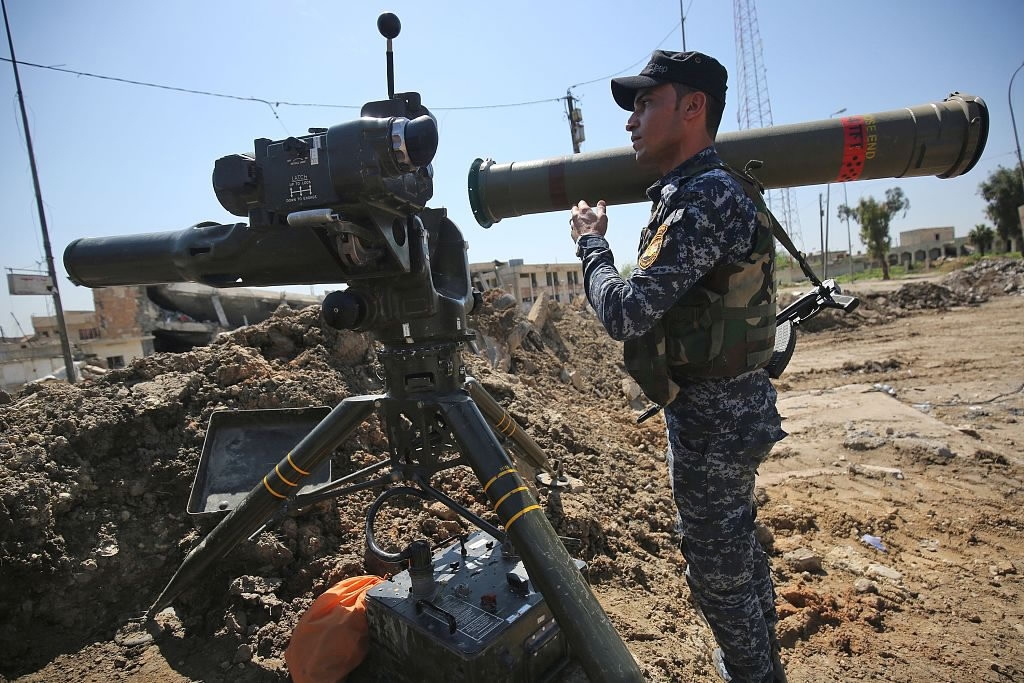
A member of the Iraqi security forces loads a TOW anti-tank missile as troops advance towards Mosul's Old City on April 17, 2017, during an offensive to recapture the city from ISIL group fighters. /VCG Photo
A member of the Iraqi security forces loads a TOW anti-tank missile as troops advance towards Mosul's Old City on April 17, 2017, during an offensive to recapture the city from ISIL group fighters. /VCG Photo
The operation to retake western Mosul, which was more densely populated, proved to be much more difficult despite initial gains, as concerns grew over rising civilian casualties from artillery and airstrikes. Iraqi soldiers had to fight suicidal ISIL militants.
During the nine-month battle, civilians perhaps had suffered the most. ISIL had been trying to stop them from fleeing and using them as human shields. A recent probe conducted by the Associated Press said between 9,000 and 11,000 people were killed in the battle, and that’s nearly 10 times higher than what was previously reported.
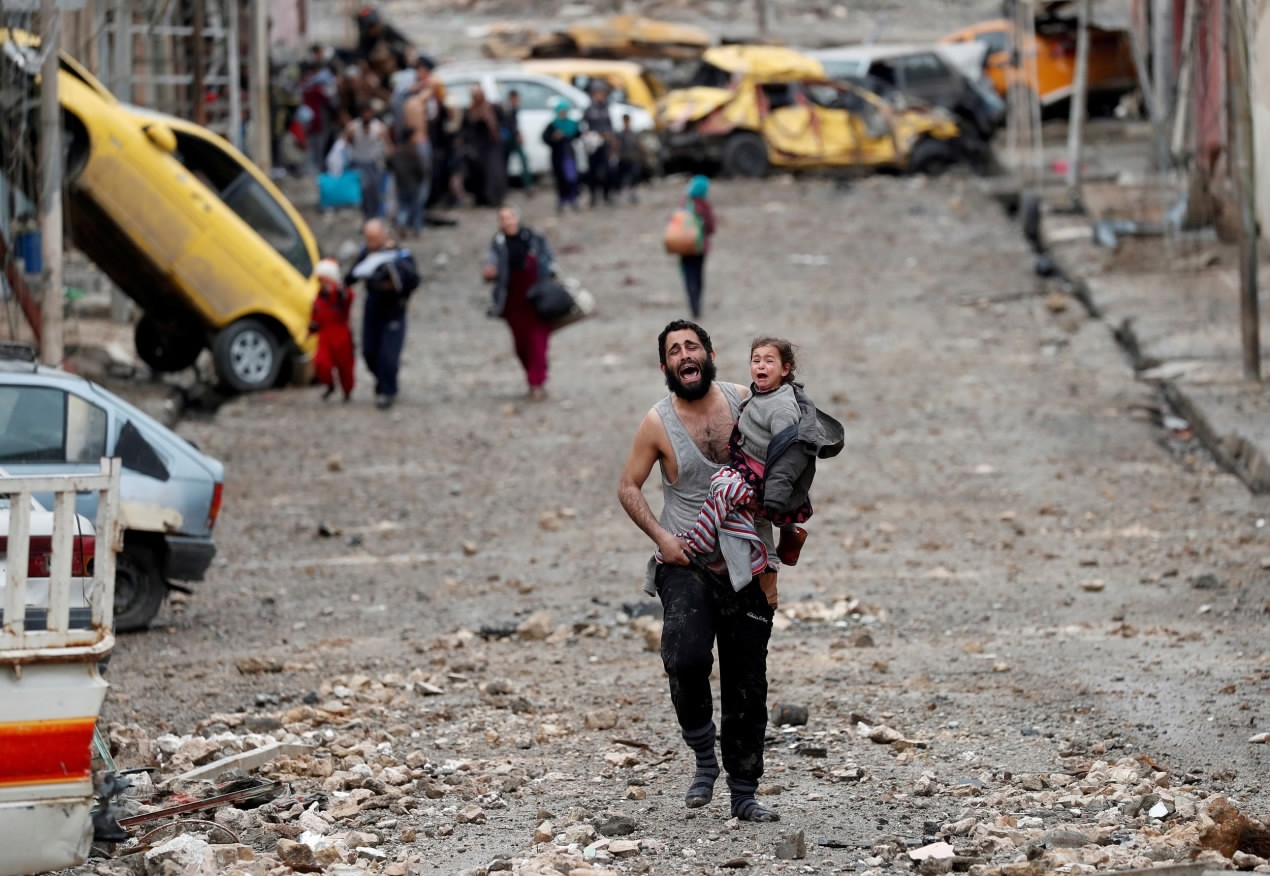
A man cries as he carries his daughter while walking from an ISIL-controlled part of Mosul towards Iraqi soldiers during a battle in Mosul, Iraq, March 4, 2017. /Reuters Photo
A man cries as he carries his daughter while walking from an ISIL-controlled part of Mosul towards Iraqi soldiers during a battle in Mosul, Iraq, March 4, 2017. /Reuters Photo
The investigation, which cross-referenced morgue lists and multiple databases from non-governmental organizations, also said Iraqi or coalition forces are responsible for at least 3,200 civilian deaths from air raids, artillery fire or mortar rounds. The number of the displaced was estimated at one million.
ISIL fighters had also attempted to ruin the city’s education and culture. Under ISIL’s control, school children were taught to shoot and kill. The Mosul University and the city’s museum were either reduced to ashes or vandalized.
Mosul’s landmark, the 12th century Grand al-Nuri Mosque and its famous leaning minaret, nicknamed Iraq’s Tower of Pisa were blown up before ISIL militants retreated. It was also in this mosque that the ISIL leader Abu Bakr al-Baghdadi made his first and only public appearance and declared his so-called “caliphate” in 2014.
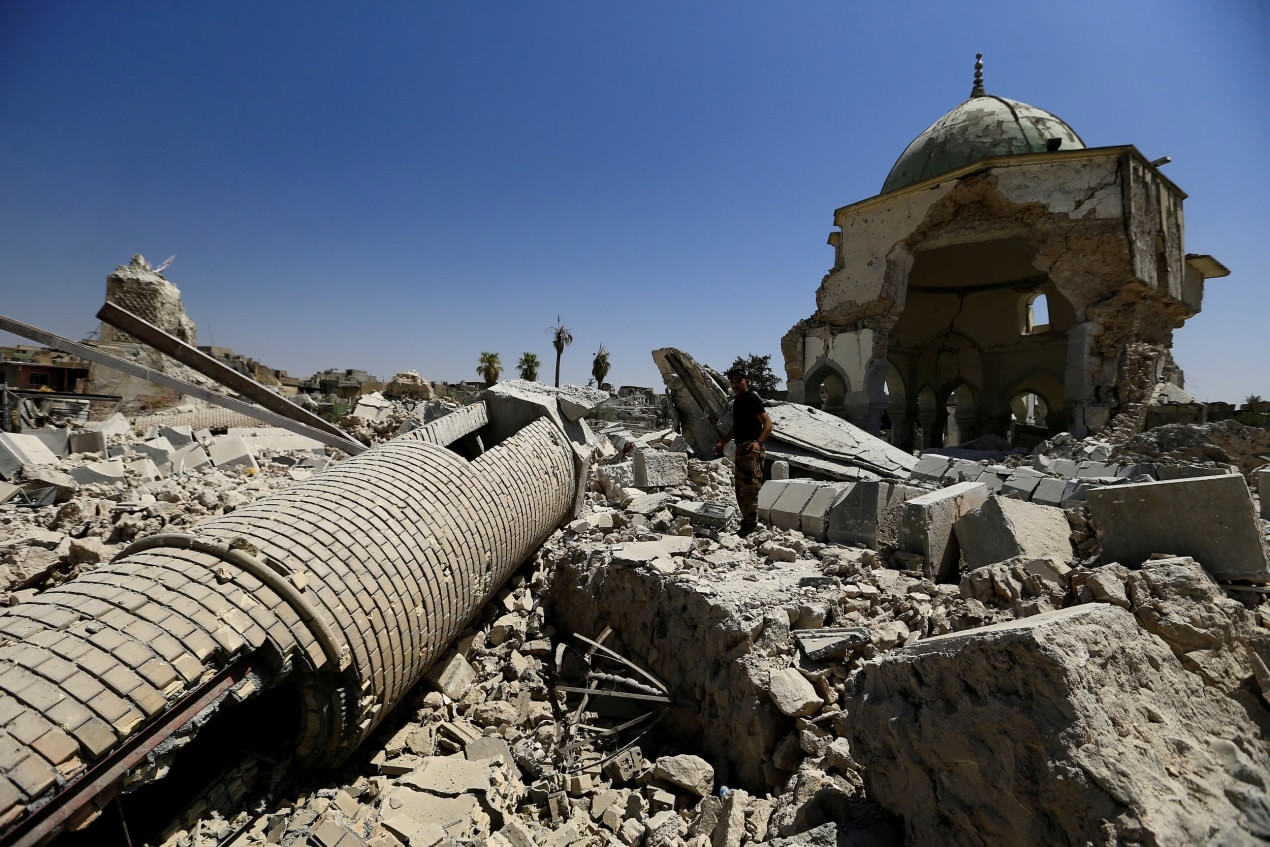
A member of the Iraqi Counter Terrorism Service (CTS) stands next to the ruined Grand al-Nuri Mosque in the Old City of Mosul, Iraq, July 20, 2017. /Reuters Photo
A member of the Iraqi Counter Terrorism Service (CTS) stands next to the ruined Grand al-Nuri Mosque in the Old City of Mosul, Iraq, July 20, 2017. /Reuters Photo
Iraqi forces took a hit too. Pentagon said 1,200 Iraqi forces were killed in the battle.
With all the bloodshed and loss of lives, Iraqi forces managed to take control of the city again in the end. Iraqi Prime Minister Haider al-Abadi announced the full liberation of Mosul on July 10, though the fighting to completely rid the city of ISIL militants continued for another ten days.
Mosul’s liberation is a historic victory to remember, but the pain will also be long felt by many.

